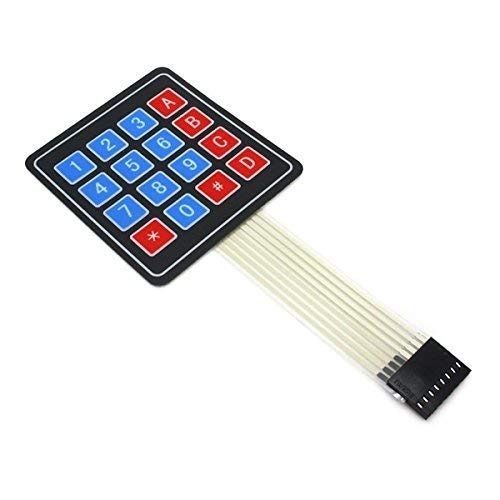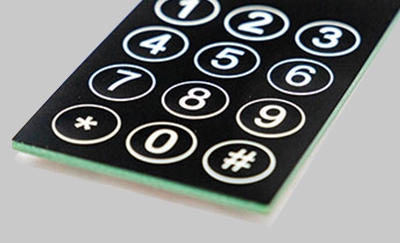Recognizing Membrane Switches Over: The Key to Resilient and Reputable Controls
Membrane switches over stand for a vital aspect of modern interface design, mixing performance with resilience in numerous applications. These flexible components not just assist in user communication however are also crafted to hold up against the roughness of demanding settings, from medical devices to commercial machinery. Recognizing their building and construction, operation, and the myriad advantages they use is vital for engineers and developers alike. As we check out the intricacies of membrane layer buttons, it ends up being clear that their duty in improving control systems is both extensive and complicated, elevating concerns concerning exactly how ideal to leverage their abilities in future innovations.
What Are Membrane Layer Buttons?
Membrane switches are an innovative remedy in the realm of user interface innovation, integrating capability and layout seamlessly. These devices function as an interface between individuals and digital systems, incorporating numerous components into a small style. Commonly built from adaptable, slim layers of products, membrane buttons are designed to react to touch, enabling users to communicate with machinery and electronic gadgets successfully.
The key elements of a membrane button include a printed circuit layer, graphic overlay, and a spacer layer that stops unexpected activation. The visuals overlay can be tailored to reflect brand identification or user preferences, improving aesthetics while guaranteeing functionality. Membrane switches are frequently utilized in different applications, including medical gadgets, consumer electronics, and industrial devices, owing to their longevity and resistance to ecological factors such as dampness and dust.
Among the vital advantages of membrane switches is their ability to hold up against deterioration, making them ideal for high-traffic atmospheres. In addition, they are light-weight and call for minimal space, enabling ingenious layouts in item development. Generally, membrane layer switches over stand for a practical and effective option for contemporary digital user interfaces, marrying innovation with user-centric layout principles.

How Membrane Layer Switches Over Job
The operation of membrane switches over depend upon a basic yet efficient mechanism that converts customer input into electronic signals. These buttons include multiple layers, generally consisting of a visuals overlay, a spacer layer, and a circuit layer. When an individual presses the switch, the leading layer warps, allowing a conductive element in the circuit layer to make call with an equivalent conductive pad on the bottom of the visuals overlay. This get in touch with closes the circuit and sends out an electronic signal to the device, showing that the switch has been turned on.
The layout of membrane buttons can vary, yet they commonly integrate domes or responsive aspects to give comments to the user, boosting the overall experience. The products utilized in membrane buttons, such as polyester or polycarbonate, add to their longevity and resistance to ecological elements, consisting of moisture and dirt. The published circuits are typically encapsulated, which protects them from wear and tear over time.

Advantages of Membrane Buttons
Among the main advantages of membrane layer switches is their versatility in layout, enabling them to be customized to fulfill certain user demands and visual demands. This adaptability includes different markets, where various shapes, sizes, and shades can be employed to enhance user interaction and aesthetic charm.
Furthermore, membrane layer buttons are recognized for their durability. Created from durable materials, they are immune to dust, dampness, and physical wear, which substantially expands their lifespan contrasted to typical mechanical switches. This longevity makes them particularly appropriate for high-traffic settings and applications requiring durability.

In addition, membrane layer switches offer a structured profile, leading to a thinner style that can be integrated right into different devices without including bulk. This feature not just improves the aesthetic allure however additionally contributes to an extra ergonomic item design.

Applications of Membrane Layer Buttons
Easy to use and functional, membrane buttons discover applications across a large range of industries, including medical devices, consumer electronic devices, and industrial tools. In the medical area, these switches are essential to devices such as diagnostic devices, client monitoring systems, and mixture pumps, where reliability and ease of cleansing are vital. Their ability to endure rough environments and preserve performance makes them excellent for such applications.
In consumer electronics, membrane switches are utilized in items like microwaves, cleaning devices, and remotes - membrane switch. Their streamlined design permits user-friendly individual interfaces, improving the total user experience while offering longevity and resistance to tear and use
Commercial devices likewise takes advantage of membrane layer switches, particularly in control panels for equipment and automation systems. These buttons use security against dirt and wetness, making sure constant performance in tough settings. Moreover, their adjustable features allow suppliers to customize them to particular operational demands, improving efficiency and capability.
Selecting the Right Membrane Switch Over
When selecting a membrane layer switch, it is vital to take into consideration different factors that affect performance and viability for particular applications. The key factors to consider include environmental problems, tactile comments, toughness, and style specifications.
First, examine the operating environment; switches revealed to moisture, chemicals, or extreme temperature levels call for specific materials to make certain longevity and performance. Next off, assess the demand for responsive feedback. Depending upon customer communication, some applications may take advantage of a responsive reaction to validate activation, while others might prefer look at this now a non-tactile style for visual factors.
Sturdiness is another crucial variable; membrane layer buttons should be developed to stand up to constant usage, impacts, and abrasion. Ensure the chosen switch can withstand the anticipated lifecycle, particularly in high-usage scenarios.
Verdict
In verdict, membrane layer switches offer as necessary elements in the design of reputable and durable control systems throughout various sectors. The adaptability of membrane changes allows for customized services that fulfill particular functional requirements, enhancing their relevance in modern innovation.
Membrane layer changes stand for an important aspect of modern-day interface layout, blending capability with durability in numerous applications.Membrane buttons are an innovative service in the world of individual interface modern technology, integrating functionality and layout effortlessly. Usually built from flexible, slim layers of materials, membrane layer buttons are developed to respond to touch, making it possible for individuals to interact with equipment and electronic devices effectively.
The design of membrane layer switches can differ, but they typically include domes or responsive elements to supply responses to the user, enhancing the general experience.In conclusion, membrane switches over look here offer as essential parts in the style of durable and trusted control systems across various sectors.